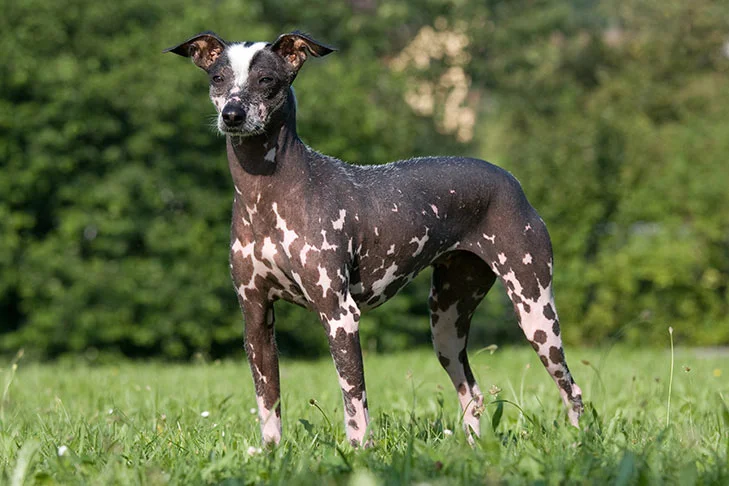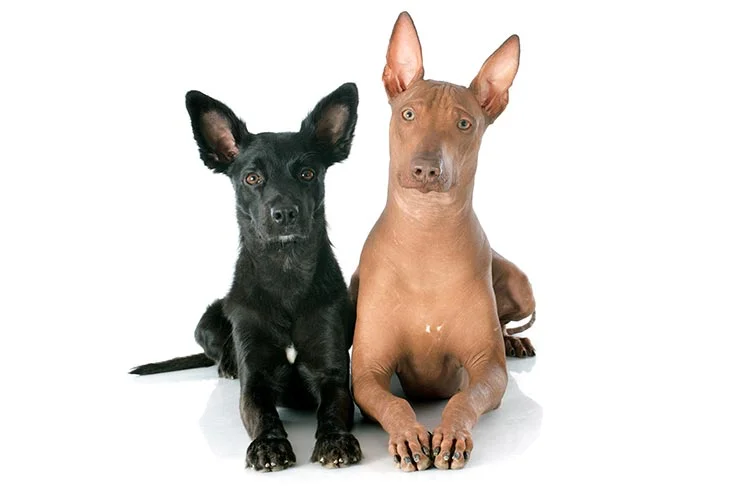The Peruvian Inca Orchid is a graceful sighthound that originated in Peru. It is agile, intelligent, and quick. The breed is available in three sizes—small, medium, and large—and can either be hairless or coated. These dogs are lively and alert, and they can be excellent hunters who excel in lure coursing, rally, and agility. The skin tone can be any color in the case of the hairless variety. All colors, including black, brown, gray, pink, tan, and white, are acceptable in the coated variety.
These affectionate companion dogs are essentially sighthounds (think Greyhounds and Whippets) and have the same elegant contours as their racy cousins. PIOs occur in a variety of sizes; the smallest may be less than 10 inches tall and the tallest may reach about 26 inches. Their distinctive trait is, of course, their lack of hair. The delicate skin may be completely one hue or may have patches of unpigmented skin. Coated and hairless PIOs can coexist in the same population, however, coated PIOs are uncommon. According to his overall conformation, the dog is a thin, graceful creature whose face indicates strength, speed, and harmony without ever coming off as rude. Another distinctive characteristic of the hairless variant is its nearly universally imperfect teeth, which is linked to congenital baldness. When he is at home with his loved ones, he is honorable and tender while also being vivacious and vigilant. He is a terrific watchdog and may be apprehensive of strangers. Although the breed is devoted to and protective of its family, like all dogs, should be supervised around younger children. Caution should also be taken with small pets that may be seen as prey.







 Health
Health Grooming
Grooming Exercise
Exercise Training
Training Nutrition
Nutrition